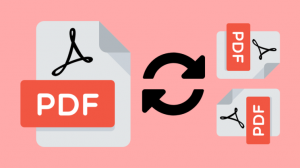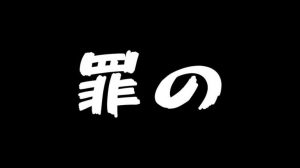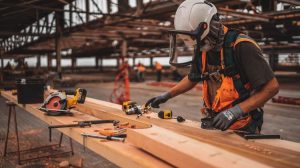No matter what type of design you’re working on, the right amount of light makes a difference in the finished concept. When it comes to manufacturing, factoring in how different areas get illuminated is even more vital and can even enhance safety measures.
You aren’t limited to the type of source, but you will need to consider several factors before choosing the exact model of lights. For example, switching to LED bulbs can save your factory money. According to The Washington Post, you’ll save $1.25 per bulb on energy usage, and the bulbs last about 25,000 hours, meaning you’ll have to replace them less often. Not only will you save on energy and replacement costs, but you’ll also save precious man-hours since less maintenance is needed.
No matter what type of lightbulb you plan to utilize, there are some factors you’ll want to consider as you design the lighting for equipment design.
-
Design of the Machine
Think about the layout of the machine. Does it have any parts that come over the base? If you’re designing the device, you can build in lights. However, if purchasing a used machine, you may need a different option. How will you get light to the surface if there is something over it? In those cases, you may need both overhead lighting and a lamp-type option the worker can point toward it.
-
Height of the Ceilings
Another thing you must consider in your design is how high the ceilings are. Most manufacturing facilities are tall. The higher you mount light fixtures, the less light reaches the equipment. Think about options that might work better, such as hanging fixtures or a bar placing them down closer to the machines.
If the design requires the lights to be at the top of the ceiling, you’ll need much more powerful illumination and possibly additional light sources to make up the difference.
-
Bright Vs. Dark Field
Although bright field lighting is more common, there may be instances when a mechanical engineer needs to use dark field illumination. Bright field includes bar lights, spotlights and ring lights at a specific geometric angle. The dark field technique offers a circular light pointed to the surface at around a 45-degree bend.
Consider how dark the surface is, mirrored sections and how light impacts the user’s vision when working with a specific piece of equipment. Getting the design just right often requires some trial and error, as well as a few math skills.
-
Uneven Reflectivity
You might run into a situation where the surface is mirrored in some spots and not others. When you have an uneven reflectivity situation, you may need diffuse lighting to help solve the issue while still providing enough brightness for the operator to use the machine safely.
Consider full-field lighting for these situations. Typically, a circular light with a cover helps diffuse the light while spreading it out evenly over a vast surface. How many of these lights you’ll need depends upon the space itself. How high are the ceilings? What are the other lighting sources? Each piece of equipment and factory is unique, so a lighting specialist must account for all factors.
-
Issues With Glare
No matter how well you design the lighting for equipment, you may run into a situation where the product has an unwanted glare. Plastic and highly reflective surfaces create issues for inspectors, and sources from a factory floor come from many different areas. Consider ways to offset this issue.
One option is using a polarizing filter. You can attach one to the light source and rotate in or out as the inspector views the product for flaws. Modern technology offers some additional solutions, such as a ring light with polarizing features. If a line moves quickly, the inspector can reduce glare by about 60% for a quick look at things such as labels, product packaging placement or even elements on the items themselves.
Some solutions can adjust the lighting automatically to reduce glare from other sources. The viewer works much like a camera, opening an aperture to allow the exact amount of light needed.
-
The Dangers of Flicker
You’ve likely heard workers complain about flickering lights. Flicker is almost a given in many lighting systems. The issue comes into play when it matches the speed of the rotating equipment on a machine. Even though the fault may only appear out of the corner of someone’s eye, if the rate of the equipment and the flickering light match, the rotating parts can seem to move more slowly than they actually do.
Imagine a line worker who has to time placing an item on the part as it moves down the assembly but thinks it moves slower than it does. The employee’s safety is at risk due to this issue. Equipment designers must ensure any lighting does not flicker, or at a minimum, it does not match the machine’s speed.
-
Light Color
The brightness and color of the lighting make a big difference. A yellow cast may make a product look slightly different than it does and result in quality issues. You have to consider the illuminance values for both the vertical and horizontal planes. Supplemented task lighting can help solve problems with specific pieces of equipment.
-
Seek a Specialist
As you can probably surmise from the issues listed above, getting the lighting incorrect on a piece of equipment may pose safety hazards. Those who design industrial lighting have extensive training in the geometry of how light works and the risk factors involved in different methods and sources.
Not only should the design go through a lighting specialist, but you should also test the function of the illumination in the setting where it resides and with the exact equipment in question. Rather than just relying on an engineer to develop ideas, talk to the people working on the line and find out what works and doesn’t work for them. Is anything hard to see? Is a flicker causing a safety issue? When it comes to workplace safety, more than one set of eyes is vital to ensuring everything runs smoothly.
Lexie is a UX designer and digital nomad. She enjoys kayaking with her goldendoodle and baking new cookie recipes. Check out her design blog, Design Roast, and connect with her on Twitter @lexieludesigner.







